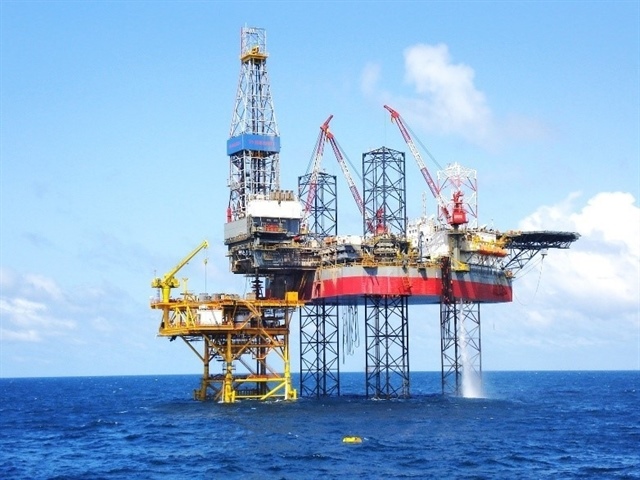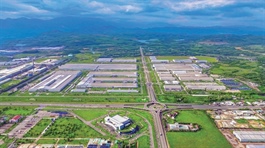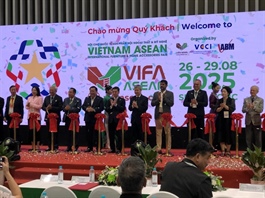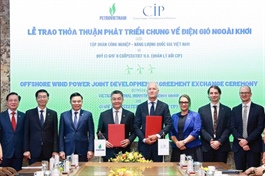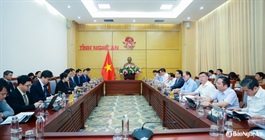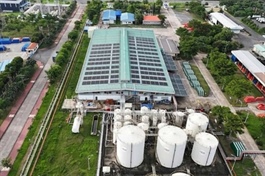Changes required to move LNG from potential to reality
Changes required to move LNG from potential to reality
Despite being positioned as a pillar of the energy transition, the implementation of liquefied natural gas projects remains sluggish, weighed down by regulatory and contractual issues that have kept progress largely on paper.
At a forum on the realisation of the revised Power Development Plan VIII over a week ago, industry leaders voiced concerns that the ambitious targets for liquefied natural gas (LNG) power are increasingly at risk.
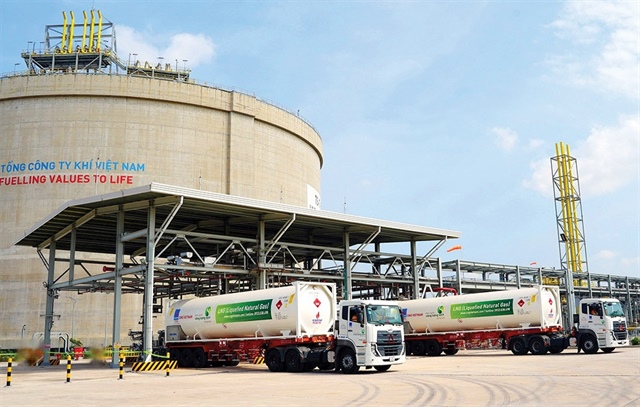
Photo: Le Toan |
“With the current pace of investment, meeting the target of putting all 15 LNG power projects into operation before 2030 is a huge challenge, especially amid lingering policy and regulatory issues,” said Mai Xuan Ba, head of investment construction at Petrovietnam Gas (PV Gas).
The revised power plan aims to add 15 LNG-to-power plants with a combined capacity of 25,625MW by 2030, a level seen as essential to sustain GDP growth of 7 per cent annually through 2030, and 6.5-7.5 per cent in the 2031-2050 period.
The roadmap also underpins Vietnam’s pledge to reach net-zero emissions by 2050. Yet for investors, the gulf between planning and execution is widening.
One of the most pressing obstacles lies in fuel supply arrangements. Domestic gas reserves are in decline, while imported LNG suppliers demand long-term offtake contracts that local projects have yet to secure. The lack of a clear mechanism to guarantee fuel purchasing has left developers unable to finalise financing structures, effectively paralysing the project pipeline.
T&T Energy, one of the country’s most active private energy developers, is facing similar hurdles. Chairwoman Nguyen Thi Thanh Binh highlighted that such projects carry massive upfront investment requirements, but green energy loans are still not backed by state guarantees, leaving banks hesitant.
“Without access to financing, projects cannot move forward. Even as the government encourages lending to green energy, there is still no effective framework for concessional loans to clean energy projects,” she said.
Binh also pointed to broader tech and market challenges in Vietnam’s transition, including hydrogen co-firing requirements, storage solutions, and the development of a viable hydrogen supply chain. T&T is working with a Chinese partner on battery storage production, expected to launch next year, but there is still no regulatory framework to guide pricing for storage-linked power projects.
The financial constraints are not limited to private developers. Nguyen Anh Tu, deputy head of planning at Vietnam Electricity (EVN), said the company would require $18.1 billion for grid investment from now to 2030, but current funding capacity can only cover about 40 per cent of the requirement.
“The scale of investment exceeds the implementation capacity of EVN and its affiliates,” he said. “Despite the revised Electricity Law enabling private participation in transmission, the current investment return policies remain unattractive, while approval procedures are still lengthy and complex.”
Stakeholders across the industry are urging the government to act swiftly to remove these bottlenecks. Binh of T&T Energy stressed the need for a comprehensive roadmap covering LNG supply assurance, long-term purchase contracts, and hydrogen co-firing pathways aligned with Vietnam’s net-zero pledge. On financing, she proposed concrete measures to support preferential loans for green projects, moving beyond policy rhetoric to tangible action.
Ba from PV Gas suggested that regulations should allow current plants to maximise domestic gas supply while supplementing with imported LNG. He recommended that blended fuel arrangements be formally recognised under upcoming decrees to ensure continuity in generation capacity.
EVN’s Tu, meanwhile, called for stronger incentives to attract private investors into the grid, with transparent pricing for transmission, guaranteed capital recovery, and reasonable returns. Tu also proposed clear coordination mechanisms between power plant investors and transmission operators to ensure synchronised progress, while urging that national resources be prioritised for feasible and bankable projects to avoid systemic delays.
- 11:12 27/08/2025






